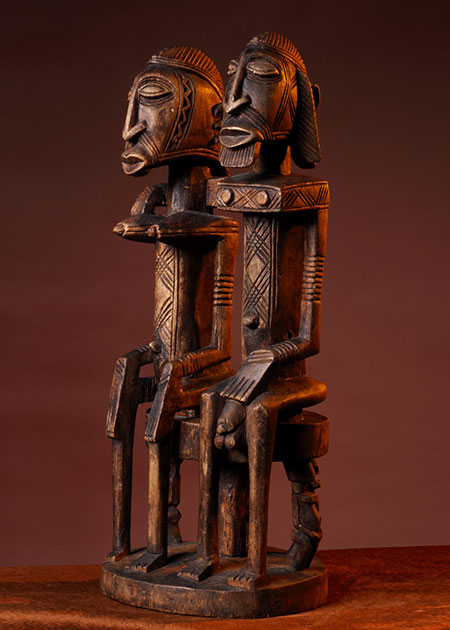Africa has a rich tradition of carving. Sculptors from across the continent have been known for their exceptional skills in producing spectacular works that portray different facets of African life. A significant number of these sculptures were historically carved in wood, owing to its widespread availability. These woodworks reflect the culture and traditions prevalent at the time of their creation. Interestingly, a lot of the woodworks emphasize the human body. West Africans crafted wood-based human figurines to pay homage to their ancestors.
While the population of West Africa is ethnically diverse, they share a lot of cultural similarities. Its unique geography with the Sahara desert bordering in the north and the west, and the Atlantic Ocean bordering the south, has helped ensure general similarities among the region’s cultures that are not shared extensively with other areas on the continent. There are 16 countries that fall under this region namely Benin, Burkina Faso, Cameroon, Cabo Verde, Chad, Côte d’Ivoire, Equatorial Guinea, The Gambia, Ghana, Guinea, Guinea-Bissau, Liberia, Mali, Mauritania, Niger, Nigeria, Senegal, Sierra Leone, and Togo.

For a very long time, people from other continents paid little attention to the arts and culture of Africa. The only exception to this norm was Egypt. Though the region has been known for its vibrant cultural exchanges, predating the colonial era, it was only later that the expansive variety of West African culture came to be appreciated.
Ghana
The West African country has been widely known for its woodworks. Almost all of Ghana is steeped in the tradition of woodcarving, but much of the work is centered in the Ashanti region, situated north of the capital city of Accra. The Ghanaian villages of Aburi and Ahwiaa are important centers of woodcarving in the country.
The Akan people have settlements spread across the modern-day countries of Ghana and the Ivory Coast. Their traditional carved items included ceremonial masks, ritualistic hardwood drums and sophisticated human figurines. Notably, the human figurines depicting ancestors were characterized by the rigidity of their facial expressions and graceful bodily postures.

In Ghana, the principal types of wood that carvers use are Sese and Tweneboa. Of these, the Tweneboa wood is more widely used. Its supple quality allows for better carving. This wood is often used for crafting ritualistic drums. The popular Kpanlogo drums are made from this wood.
Since antiquity, the people of Ghana believed that the place was home to supernatural spirits. As a result, timber that had been collected for woodcarving was often passed through elaborate ritual purification rites before work on it began. Similarly, when a woodcarver procured new chiseling tools for his work he had to placate these spirits to solicit their benevolence. As a part of this placation, woodcarvers were required to drench their new tools in mixtures that contained a high proportion of alcohol. Along with this they also offered prayers for the liberation of these spirits. A commonly used prayer that carvers offer to the tree’s spirit before feeling it:
“I am coming to cut you down and carve you, receive this egg and eat…do not let the iron cut me, do not let me suffer in health.”
(As documented by Prof. R.S. Rattray in his thesis “Religion and Art in Ashanti”- 1927)
Today, Ghana’s wood carving industry has become an important contributor to the country’s economy. It makes up for a sizable portion of the country’s exports as well. Some of these artifacts include:

Masks
Imbued with delicately carved elements, the masks are often thought of as being part of the aesthetic realm of African culture. However, masks acted as a go-between between the living and the dead. In its capacity as an intermediary, when worn during ritualistic ceremonies the mask became a means through which the ancestors channeled their supernatural wisdom.
These masks are often thought of as “an opening through which to glimpse the spirit world.”

Drum
For a non-African, drums seem like a quintessential element of African culture. As several archaeological findings suggest, music has been intimately woven into the fabric of the African way of life. Drums were mostly used as a means to channel emotional sentiments to their fellow tribespeople. Consequently, they were omnipresent at times of life-changing events like war and peace, birth and death, among others.

Human figurines
Most of these were carved as a homage to the tribes peoples’ ancestors. Characterized by ethereal, enigmatic features, the deep meanings conveyed by them might prove difficult to dissect. Yet, they have come to be widely appreciated for their subtle elegance.





